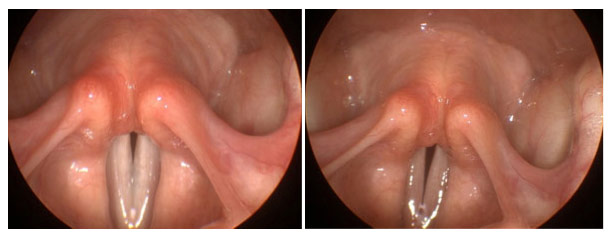- Question: How do the ingredients in e-cigarettes and vaporizers affect respiratory health? - August 16, 2019
- Bad Technique and Vocal Injury - January 9, 2019
- Is Edible Marijuana Dangerous for the Voice? Myths Dispelled - December 18, 2018
- Surprise! You have a hemorrhage - January 31, 2018
- Graves’ Disease: Treatment Overview - September 25, 2017
- Adele and the Stigma of Vocal Injury - July 11, 2017
- Vocal Curbside Consult: How does the thyroid affect the voice? - May 16, 2017
- Vocal Curbside Consult: How do hormones affect the voice? - May 3, 2017
- Vocal Curbside Consult: How do emotion and stress affect the voice? - April 17, 2017
- Vocal Curbside Consult: Vocal Recovery After Illness - April 7, 2017
 Reality star turned entrepreneur, Lauren Conrad, recently discussed how her voice has changed over the years. Conrad’s pre-MTV reality show voice is less raspy than the voice she currently uses, a fact which she blames on moving to Los Angeles.
Reality star turned entrepreneur, Lauren Conrad, recently discussed how her voice has changed over the years. Conrad’s pre-MTV reality show voice is less raspy than the voice she currently uses, a fact which she blames on moving to Los Angeles.
“I destroyed my voice when I moved to L.A. There are polyps all over my vocal chords (sic) because I was in a lot of loud places,” stated Conrad in an interview with Marie Claire magazine. From her description, it appears Lauren has fragile vocal cords that are prone to injury.
What are fragile vocal cords?
“Fragile vocal cords” is a term recently coined to refer to the fact that not all vocal cords respond the same to stresses. People are aware of this as they complain that they lose their voice frequently and that friends do not get hoarse as often.
 The term means that some people’s vocal cords are more prone to swelling and injury than others. Early in life (teenage years – early 20s), those people will get hoarse more often and more easily. For example, after attending a football game, cheerleading, or going to a restaurant or bar, a person with fragile vocal cords will complain of being hoarse. However, this hoarseness resolves on its own, within 1-3 days. Because the voice returns to normal, the person thinks nothing of it.
The term means that some people’s vocal cords are more prone to swelling and injury than others. Early in life (teenage years – early 20s), those people will get hoarse more often and more easily. For example, after attending a football game, cheerleading, or going to a restaurant or bar, a person with fragile vocal cords will complain of being hoarse. However, this hoarseness resolves on its own, within 1-3 days. Because the voice returns to normal, the person thinks nothing of it.
However, later in life (mid-20s to 30s), this hoarseness lasts longer and eventually may never completely resolve. People for whom this happens are thought to have “fragile vocal cords.”
How do I know if I have fragile vocal cords?
People with fragile vocal cords get hoarse frequently and easily. You may notice that when you go out with friends, your friends may sound normal the next day while you become hoarse.
This suggests that your vocal cords are more susceptible to injury and that you may have fragile vocal cords.
What causes hoarseness in people with fragile vocal cords?
People with fragile vocal cords more easily experience swelling of their vocal cords. Swelling will produce instant hoarseness and the swelling can become permanent and cause permanent injury.
What should someone with fragile vocal cords do?
The most important thing is to recognize you may have fragile vocal cords and seek evaluation. The only way to determine if you are prone to vocal injury is to seek evaluation by a laryngologist and have a videostroboscopy.
If you feel you are someone who is prone to vocal injury, it is critical to determine risk factors in your own life. These may include:
- Smoking
- Frequently being in loud environments
- Speaking incorrectly
- Having a vocally-demanding job
Lauren Conrad cited one of the most common culprits: being in loud places. In particular, because these problems begin in the teenage years and the 20s when people go out the most, it is important to identify early in life if you are prone to vocal injury.

Is this damage reversible?
If caught early (teenage – 20s), it is possible to catch these problems before they become irreversible. However, if you wait until the time when the periods of hoarseness last long or require medications such as steroids, it may be too late to fully restore the voice.
For the voice, no cure is better than prevention. While surgery and new treatments can improve the voice, early detection and prevention is the key to vocal protection.
Read patient stories about Dr. Reena Gupta from The Division of Voice at the Osborne Head and Neck Institute.
To learn more about the voice, click here.




